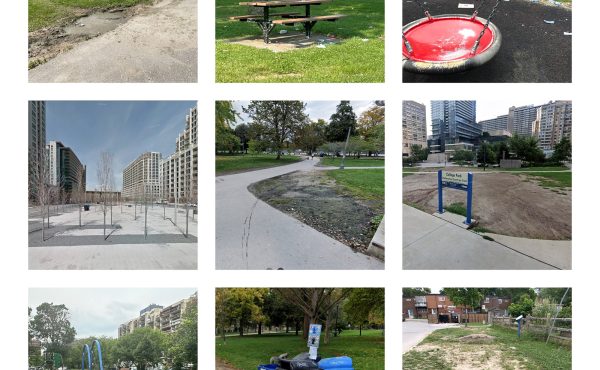
A Sunday walk along a choppy Lake Ontario to deserted HtO Park yesterday presented little distraction from reading the many signs in the Harbourfront area. There are lots — the waterfront could be called the Sign District (special signs to designate it could be made up). No skateboarding, no rollerblading, no various and sundry activities. Toronto’s officiousness is so infectious that one visitor augmented the above sign, driving home the point a little more. Perhaps it metaphorically represents the so-called separation Torontonians have with Lake Ontario.

Over at the new and nice Spadina Wave, it takes longer to read the instructions on how to use the wave than to cross the wave itself. It’s true that I did not feel in danger anytime during my walk, and I always knew what to do and where my place was. Bureacratic prose and phrasing bounced through my head for the rest of the day, like how a catchy tune might stay with you for a while. Municipal Code #608 is a Toronto indie rock song waiting to be written.




5 comments
And really, since we are unable to enforce important signs (most street traffic signs come to mind) what is the point of putting up a sign? It is just visual litter and a waste of money.
>Municipal Code #608 is a Toronto indie rock song waiting to be written.
Haha, who do you have in mind? I’m imagining something like this:
http://ca.youtube.com/watch?v=F1WxZ4w7NFM&feature=related
Some might associate the superfluous NOs to the short run Britcom series “Vicar Of Dibley” featuring Dawn French.
One amiable character in that series prefaced everything he said with “No no no”. This was cause of great confusion and humour. Quite apt considering the sign jungle bereft of Yeses.
It’s important to remember that this is the waterfront separated from the rest of the city by an expressway–at times elevated–that blocks the city’s enjoyment of its lakeside situation.
I remember the outcry about the Gardiner Expressway back in the fifties and I remember the waterfront from before that time.
Swings and roundabouts.
I just walked under the Gardiner to get to the water’s edge. It wasn’t blocking me.